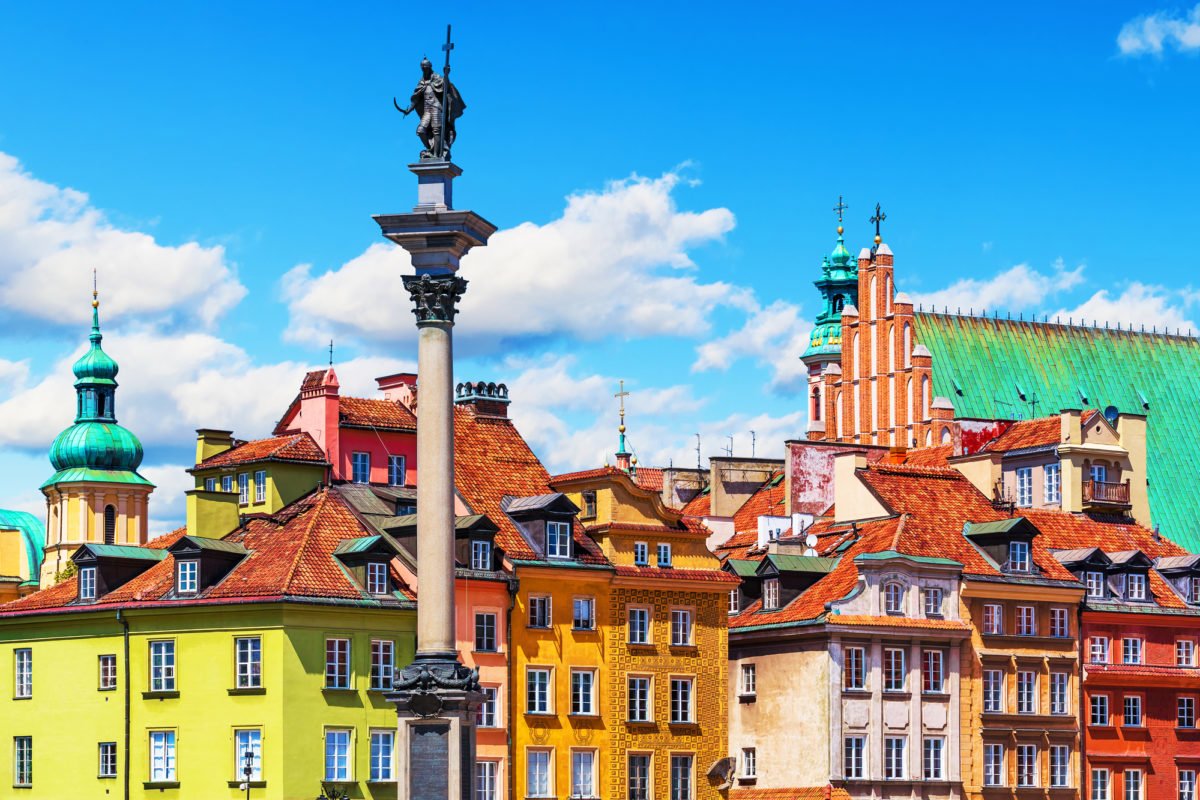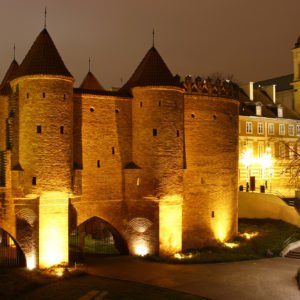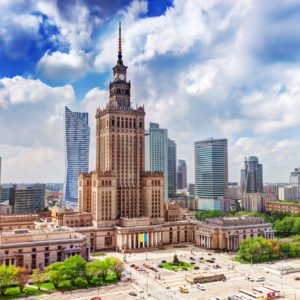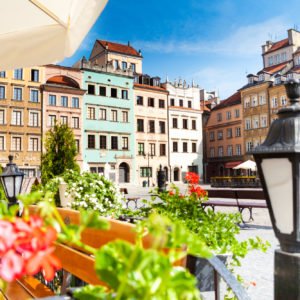
Warsaw is the only city, except Krakow, which in a nutshell gives us the history of the country.
The largest and richest city in Poland, every tourist will fall in love with. This is Warsaw, filled with monuments and tourist attractions. Visit the capital with us!
Your driver will meet you at the hotel and drive to Warsaw where you will have 5h for sightseeing. You can do it by yourself, join some free walking tour or any other tour in Warsaw. After your time in Warsaw, driver will take you back to your accomodation in Wroclaw
| Number of people | 1 | 2 | 3 | 4 | 5 | 6 | 7 | 8 |
| Price EUR/person | 250 | 130 | 90 | 70 | 60 | 49 | 45 | 39 |
Inclusions
Exlusions
– round trip
– driver
– fuel surcharge
– all taxes
– bottled water
– hotel pick up and drop off
– private tour
– airconditioned car/minivan
– food % drinks
– guide service
– gratuities (optional)
About trip
Duration: 14-15h
Prices start from 39,00 EUR/person
There is no way to start tours around Warsaw from another location other than the old town. When we look at the pictures from World War II or the first years after the liberation, we’ll see how the tremendous work has been done by urban planners, architects and construction engineers. In the heart of Plac Zamkowy (the Castle Square) there is Zamek Królewski (Royal Castle), which is open for tourists. Inside, we will see, inter alia, Sala Tronowa (the Throne Room) and Sala balowa (Ballroom), the princes’ rooms or chamberlain’s apartment, as well as two Rembrandt’s paintings and tapestries. Near the castle there is another symbol of the capital – Kolumna Zygmunta (Sigismund’s Column), which was made on Władysław IV order to honour his father-King Sigismund II Vasa, who moved the capital of the Republic from Kraków to Warsaw. Important elements of the old town are also the Statue of Warsaw Mermaid, Kamienne Schodki (Stone Steps), Barbakan (The Barbican) and Pomnik Małego Powstańca (the Monument of the Little Insurgent).
Following the Royal Tract
Sightseeing tour coincides often with the less known trail – Royal Tract, which connects the Plac Zamkowy with Wilanów. On the way we will see a lot of monuments and churches. The most interesting attractions of Warsaw, which we will pass, include Pałac Prezydencki (Presidential Palace) and Grób Nieznanego Żołnierza (the Tomb of the Unknown Soldier). It is worth being there at a full hour to see the change of the guards. Royal tract intersects with a stop of one and only Polish underground line, that is why you should get into that unusual for our country, public transport and ride at least one station.
At the famous Krakowskie Przedmieście street, which is a fragment of the Tract, we can see the building of one of the largest Polish universities – the University of Warsaw and its library. Outside the University Library a student is sitting, but this particular one is not preparing in the sweat of his brow for the upcoming session, but he is a monument.
Warsaw gardens and palaces
The most recognizable palace and park complexes are Łazienki and Wilanów. Łazienki is a complex of greenery and architectural monuments, which occupies nearly 80 acres in the heart of the capital. Among the captivating nature, Warsaw guides will show you Pałac na Wyspie (Palace on the Isle), Pałac Myślewicki, Biały Dom, Stara Pomarańczarnia, Wielka Oficyna (also called Podchorążówka) and Amfiteatr, as well as numerous pavilions and monuments.
Wilanów is situated on the outskirts of the city, we will feel the spirit of the glory days of the Nobles’ Republic. Times of Jan III Sobieski and his beloved Marysieńka can be felt here with almost every step. Warsaw Tourists willingly end a thrilling tour in the comfort of Wilanów park (built in the style of the Italian Baroque and the English Romanticism) and the gorgeous interiors of the palace.
Uprising card of Warsaw history
During World War II the population of Warsaw did not want to watch passively the actions of the occupier. In the capital two uprisings were erupted – the Warsaw Ghetto Uprising and the Warsaw Uprising. The Jewish population involved in the Third Reich extermination plan was crowded in the ghetto and thus exposed to the tragic living conditions and epidemics. Systematic exportation of the ghetto inhabitants to the death camps faced the opposition of the Jewish armed organizations operating the underground, and the fights were held April –May, 1943. Uprising ended with the destruction of Wielka Synagoga (the Great Synagogue) and the Jewish quarter was razed to the ground.
The Warsaw Uprising started a year later, on 1 August 1944, and its aim was to remove the Nazi troops from Warsaw. Although the Poles were supported by the Red Army, the capital was not relieved. On October 2-nd capitulation was signed. During the fighting about 25% of the buildings in areas affected by the insurgents’ actions was demolished, but the Germans made more damage after the capitulation. More about those dramatic moments, you can find out in the Warsaw Uprising Museum.
Warsaw attractions are so numerous that becoming familiar with all the perks of the heart of the country on the Wisła river would be enough for several days’ trip. It is worth visiting, for example, newly built National Stadium, multimedia Frederic Chopin Museum, multimedia Fountain Park and the Palace of Culture and Science, and there enter the observation deck located on the 30th floor of this historic building.
Year after year, the Copernicus Science Centre, founded in 2005 is getting more and more popular. This organization popularizing science, financed by public funds, presents an interesting phenomena in an interactive format. In the Centre you can watch hundreds of interactive exhibits organized in six permanent galleries; you should also see the Planetarium – Mikołaj Kopernik’s Planetarium and experiment in the laboratories: robotic, physical, chemical and biological.






